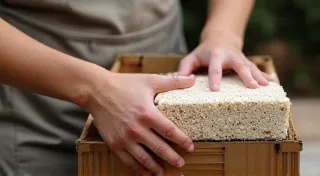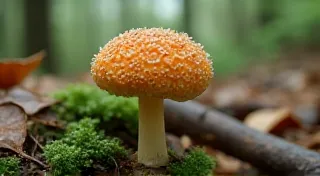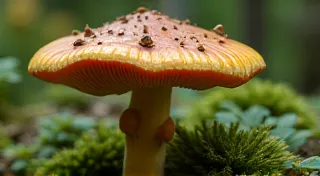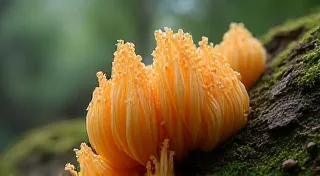Pink Oyster Mushroom Cultivation: A Pop of Color
Want to add a vibrant splash of color to your home mushroom garden? The Pink Oyster mushroom (Pleurotus djamor) is a fantastic choice! Known for their stunning pink to coral hues, these gourmet mushrooms are as beautiful as they are delicious. This guide will walk you through the essentials of cultivating Pink Oyster mushrooms at home, covering substrate preferences and ideal environmental conditions.
Understanding Pleurotus djamor
Pleurotus djamor, the Pink Oyster mushroom, is a relatively fast-growing species, known for its adaptability and striking appearance. While not as commonly cultivated as the Blue or Golden Oyster mushrooms, they offer a rewarding experience for both novice and experienced mushroom growers. Their flavor is often described as mild and slightly fruity, making them versatile in various culinary applications. For those new to the world of mushroom cultivation, understanding the crucial role of substrate preparation is key to success – a process we’re going to unpack in detail.
Substrate Preferences: Feeding Your Pink Oysters
Like all mushrooms, Pink Oyster mushrooms require a nutritious substrate to thrive. While they're adaptable, they have some specific preferences. Here's a breakdown:
- Hardwood Sawdust: This is a primary and excellent choice. Pink Oysters particularly enjoy a hardwood blend.
- Straw: Wheat straw can be incorporated, but typically as a minor component (around 20% or less) due to its lower nutrient content compared to hardwood.
- Coffee Grounds: A small percentage (around 10-15%) can supplement the nutrient mix.
- Gypsum: Adding gypsum (calcium sulfate) is crucial. It helps regulate pH and provides essential calcium for healthy mycelial growth.
A good starting ratio for a Pink Oyster substrate might be 70% hardwood sawdust, 20% straw, 5% coffee grounds, and 5% gypsum. Thoroughly mix and hydrate the substrate to achieve a field capacity – squeezed in your hand, it should release a few drops of water. Remember, the quality of your substrate significantly impacts yield. To truly master the art of growing gourmet mushrooms, it’s worth delving deeper into substrate preparation, understanding the nuances of different ingredients and their impact on mushroom health and productivity. Improperly prepared substrate can lead to slower growth and increased risk of contamination.
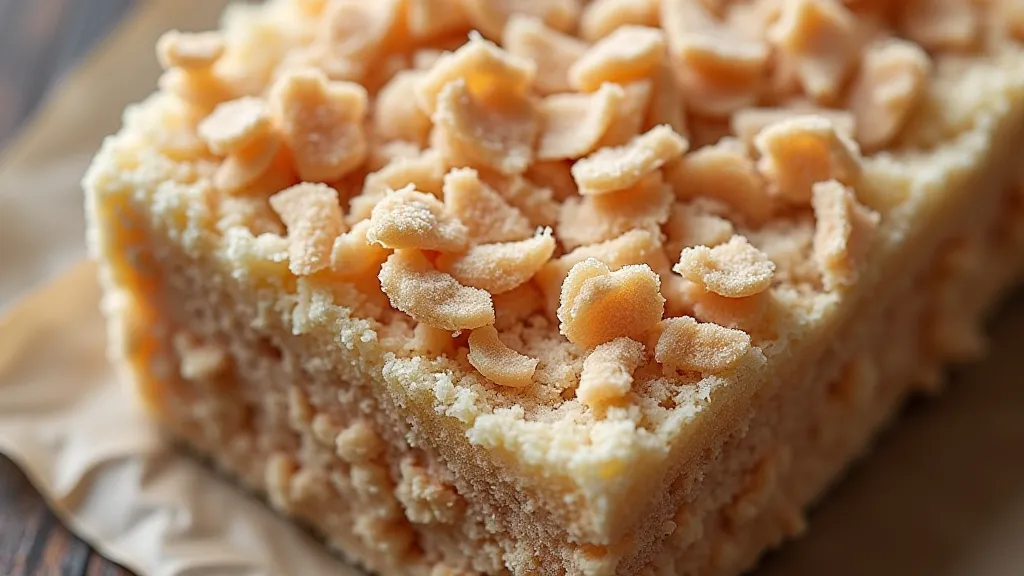
Environmental Conditions: Creating the Ideal Growing Space
Pink Oyster mushrooms are fairly forgiving but require specific environmental conditions for optimal fruiting. Maintaining optimal humidity is crucial for healthy development. The entire process, from inoculation to harvesting, benefits greatly from understanding the fundamentals of how to dry and store your mushrooms properly after harvesting – preserving their flavor and nutritional value.
- Temperature: The ideal temperature range for Pleurotus djamor is between 18-26°C (64-79°F). Cooler temperatures will result in slower growth and potentially paler colors.
- Humidity: High humidity is essential, ideally 85-95%. Frequent misting is required, especially during the fruiting stage.
- Light: While not as demanding as some other oyster varieties, Pink Oysters do benefit from indirect light. A few hours of diffused light daily can enhance color and shape.
- Airflow: Good airflow is important to prevent stagnant conditions and reduce the risk of contamination.
Inoculation and Fruiting
Once your substrate is prepared, it's time to inoculate it with Pink Oyster spawn. Thoroughly mix the spawn into the substrate. After inoculation, the mycelium will colonize the substrate, which typically takes 2-3 weeks. Once the substrate is fully colonized, introduce fruiting conditions – increase humidity, provide light, and ensure adequate airflow. The anticipation of those first pins emerging is truly exciting!
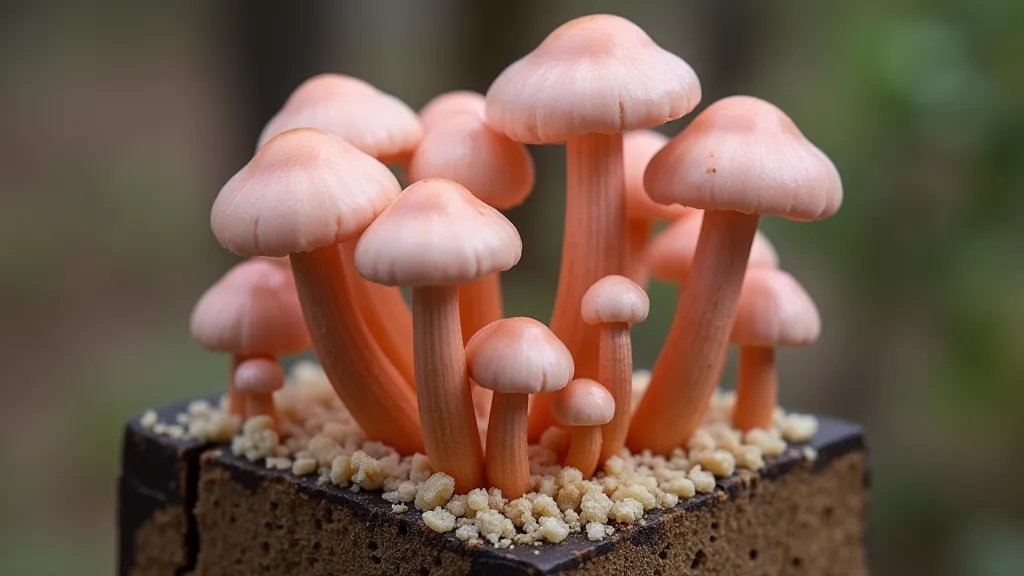
Troubleshooting and Common Issues
While relatively easy to grow, some issues can arise:
- Slow Colonization: Could be due to low temperatures, contamination, or old spawn.
- Contamination: Maintain strict hygiene throughout the process. Use sterile techniques and clean equipment.
- Pale Color: Insufficient light or temperatures that are too cool.
- Deformed Fruiting Bodies: Often a symptom of inconsistent humidity or airflow. Experiment with different misting schedules and improve ventilation.
- Lack of Pinning: Sometimes a sign of insufficient nutrients or a prolonged colonization period. Make sure the substrate is fully colonized before introducing fruiting conditions.
Harvesting
Harvest Pink Oyster mushrooms when the caps are fully expanded but before they start to drop spores. Gently twist and pull the clusters from the substrate. Multiple flushes can be harvested from a single substrate block with proper care. Considering the care you put into cultivating these stunning mushrooms, extending their shelf life and preserving their unique flavor is important. Many growers find success with various drying and storage methods to enjoy the harvest long after the initial pick.
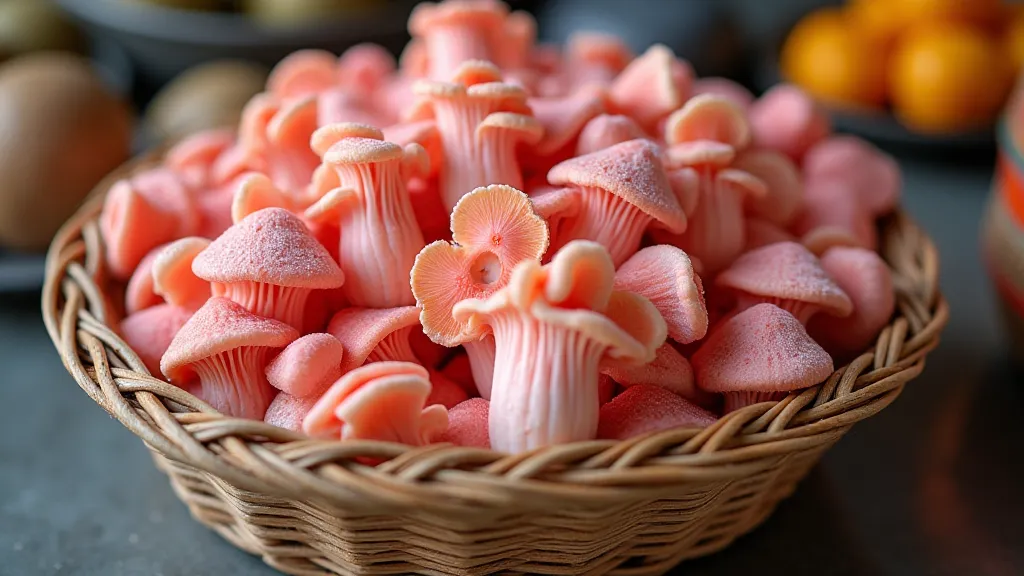
Cultivating a successful mushroom garden takes practice and attention to detail. If you're aiming for even more challenging and rewarding varieties, exploring species like the King Trumpet mushroom can provide a significant learning experience. You can find more details on how to cultivate them in our guide to King Trumpet mushroom cultivation. Many seasoned mushroom growers will tell you that while Pink Oysters are relatively easy, the journey of cultivating more difficult species is incredibly rewarding.
With a little care and attention, you can enjoy the beauty and deliciousness of Pink Oyster mushrooms grown right in your own home!
